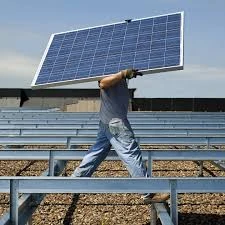solar installation price
Understanding Solar Installation Prices A Comprehensive Overview
As the world shifts towards sustainable energy sources, solar power has emerged as a viable solution for both residential and commercial energy needs. However, one of the most pressing concerns for potential solar adopters is the cost associated with installing a solar energy system. Understanding the factors that affect solar installation prices can help consumers make informed decisions.
Initial Costs
The price of solar installation varies widely based on several key factors. On average, residential solar systems can range from $15,000 to $25,000 before any tax credits or incentives. These initial costs typically include solar panels, inverters, mounting equipment, and the labor needed for installation. The cost per watt is often used as a benchmark, with prices generally falling between $2.50 to $3.50 per watt for residential installations.
Size and Type of System
The size of the solar system is one of the most significant factors influencing its overall price. Larger systems, which can generate more electricity, usually have higher upfront costs but tend to offer a better return on investment over time. Additionally, the type of solar panels chosen—whether monocrystalline, polycrystalline, or thin-film—also impacts the price. Monocrystalline panels, known for their efficiency and space-saving capabilities, generally cost more, while polycrystalline panels are often more affordable but might require more space for the same energy output.
Location and Installation Accessibility
Geographical location plays a crucial role in determining solar installation costs. Areas with higher sunlight intensity can yield better energy production, making solar systems more attractive to homeowners. Furthermore, installation accessibility can influence labor costs. Homes with difficult roofs or complex layouts may require specialized equipment or techniques, which could increase installation costs.
solar installation price

Financing Options and Incentives
The financial aspect of solar installation can be further complicated by the array of financing options available. Many homeowners opt for solar loans, solar leases, or power purchase agreements (PPAs). These options allow consumers to enjoy the benefits of solar energy without the burden of high upfront costs. Additionally, numerous federal, state, and local incentives exist to help offset installation expenses. For example, the Federal Investment Tax Credit (ITC) allows homeowners to deduct a percentage of their solar installation costs from their federal taxes, significantly reducing the overall expenditure.
Long-term Savings and ROI
While the initial costs can be daunting, it’s crucial to consider the long-term financial benefits of solar energy. Most solar systems have a lifespan of 25 years or more. Over this period, homeowners can save significantly on their electricity bills, with many reports suggesting savings of $20,000 to $30,000 or more, depending on energy consumption and utility rates. Additionally, solar energy systems can increase property value. Real estate studies indicate that homes with solar panels often see higher resale values.
Future Considerations
As technology advances, the solar industry is continuously evolving. The emergence of energy storage systems, such as batteries, allows homeowners to store excess energy generated during the day for use at night, providing even greater energy independence and savings. However, these systems add to the overall installation price, typically ranging from $5,000 to $10,000 or more.
Conclusion
In summary, the costs associated with solar installation are influenced by several interrelated factors, including system size, type, location, and available financial incentives. Despite the initial investment, the long-term savings, potential tax credits, and increased property value present a compelling case for solar energy adoption. As public interest continues to grow, it's essential for homeowners to conduct thorough research and assess both their energy needs and financial options before making the switch to solar power. With careful consideration, the transition to a sustainable energy solution can be both a financially sound and environmentally responsible choice.
-
String Solar Inverter: The High-Efficiency Solution for Smart Solar EnergyNewsJul.14,2025
-
Revolutionizing Rooftop Energy with the Power of the Micro Solar InverterNewsJul.14,2025
-
Power Independence with Smart Off Grid Solar Inverter SolutionsNewsJul.14,2025
-
On Grid Solar Inverter: Powering the Future with Smart Grid IntegrationNewsJul.14,2025
-
Monocrystalline Solar Panels: High-Efficiency Power for the Future of Clean EnergyNewsJul.14,2025
-
Bifacial Solar Panel: A Smarter Investment for Next-Generation Energy SystemsNewsJul.14,2025







